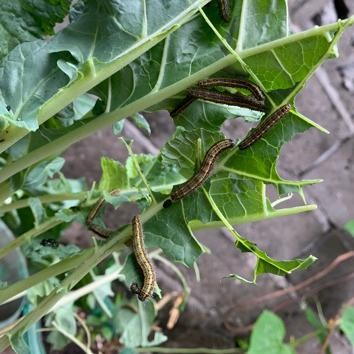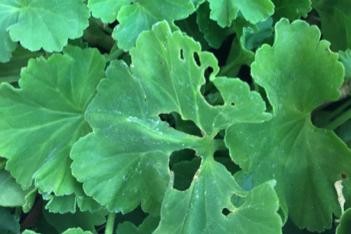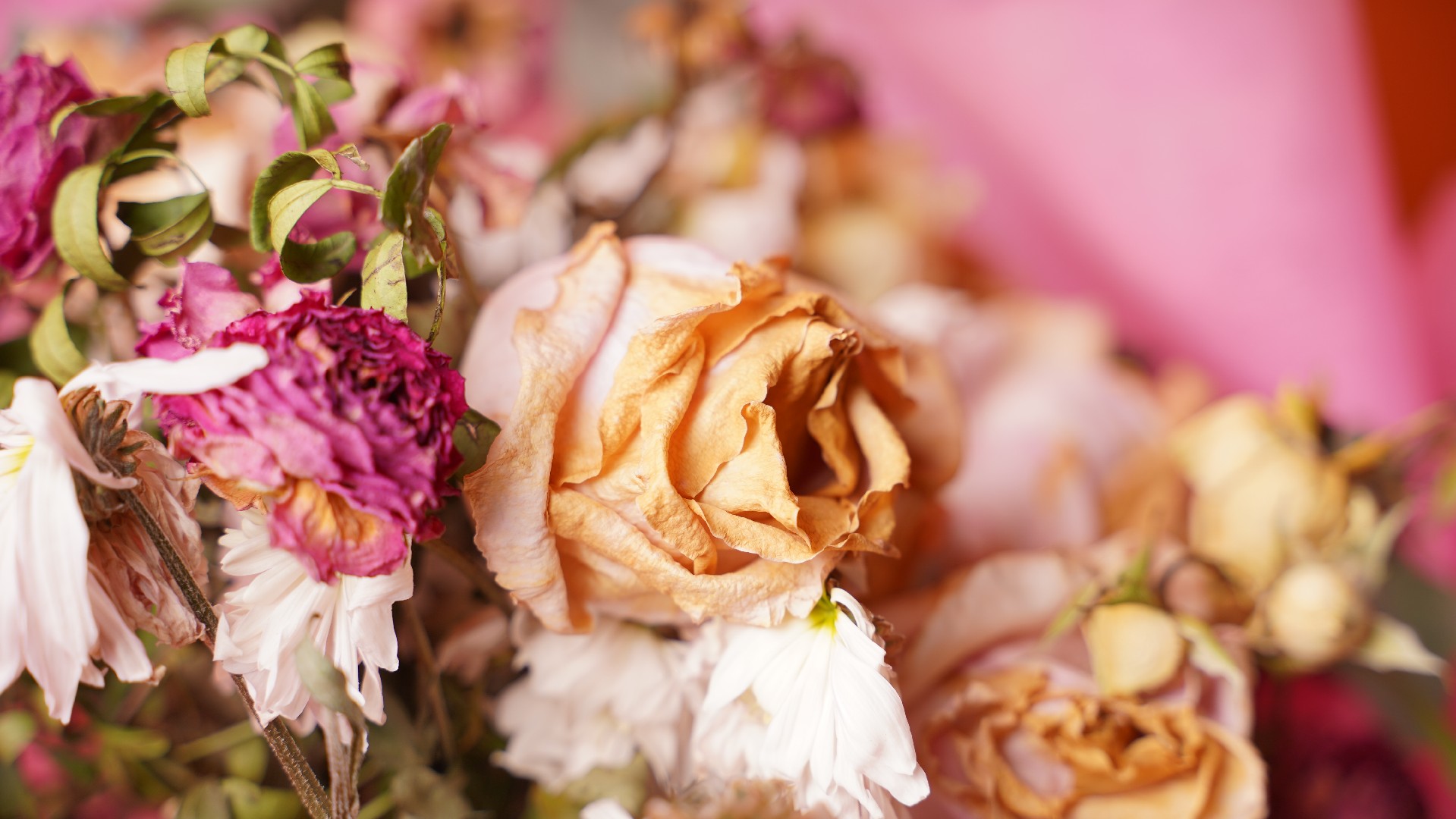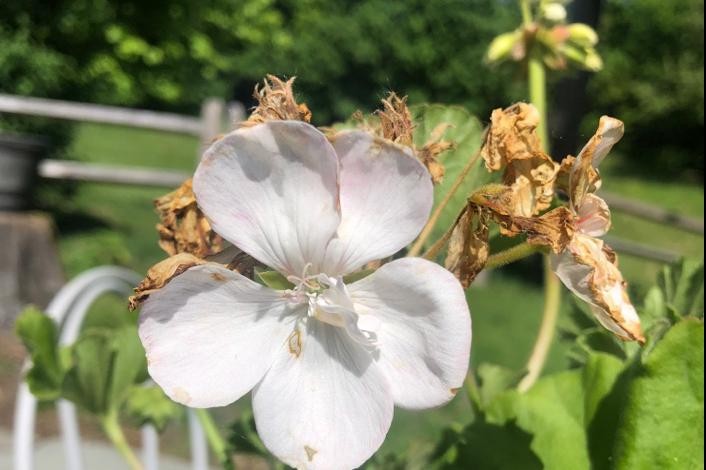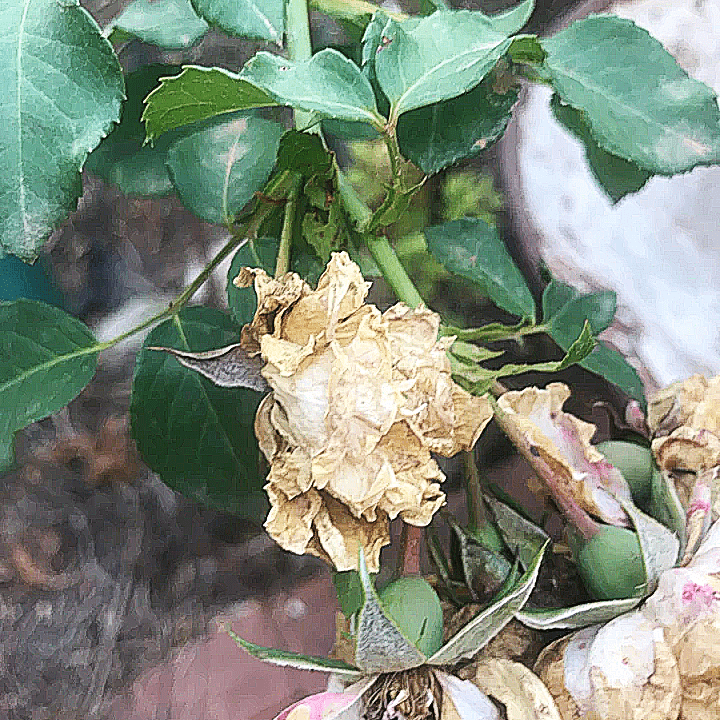What is the best way to water my Annual mullein?
When watering the Annual mullein, you should aim to use filtered water that is at room temperature. Filtered water is better for this plant, as tap water can contain particles that are harmful to its health. The reason that the water should be at room temperature or slightly warmer is that the Annual mullein comes from a warm environment, and cold water can be somewhat of a shock to its system. Also, you should avoid overhead watering for this plant, as it can cause foliage complications. Instead, simply apply your filtered room temperature water to the soil until the soil is entirely soaked. Soaking the soil can be very beneficial for this plant as it moistens the roots and helps them continue to spread through the soil and collect the nutrients they need.
![more]()
What should I do if I water my Annual mullein too much or too little?
Both overwatering and underwatering will be detrimental to the health of your Annual mullein, but overwatering is a far more common issue. When this species receives too much water, its stems and leaves may begin to wilt and turn from green to yellow. Overwatering over a prolonged period may also lead to diseases such as root rot, mold, and mildew, all of which can kill your plant. Underwatering is far less common for the Annual mullein, as this plant has decent drought tolerance. However, underwatering remains a possibility, and when it occurs, you can expect to find that the leaves of your Annual mullein have become brittle and brown. It is crucial that you notice the signs of overwatering as soon as possible when caring for your Annual mullein. Some of the diseases that arise from overwatering, such as root rot, may not be correctable if you wait too long. If you see early signs of overwatering, you should reduce your watering schedule immediately. You may also want to assess the quality of soil in which your Annual mullein grows. If you find that the soil drains very poorly, you should replace it immediately with a loose, well-draining potting mix. On the other hand, if you find signs that your Annual mullein is receiving too little water, all you need to do is water more regularly until those signs have subsided.
![more]()
How often should I water my Annual mullein?
If your plant is in a pot. The most precise way to decide whether your Annual mullein needs water is to plunge your finger into the soil. If you notice that the first two to three inches of soil have become dry, it is time to add some water. If you grow your Annual mullein outdoors in the ground, you can use a similar method to test the soil. Again, when you find that the first few inches of soil have dried out, it is time to add water. During the spring and early fall, this method will often lead you to water this plant about once every week. When extremely hot weather arrives, you may need to increase your watering frequency to about twice or more per week. With that said, mature, well-established the Annual mullein can show an admirable ability to withstand drought.
![more]()
How much water does my Annual mullein need?
When it comes time to water your Annual mullein, you should not be shy about how much water you give. With the first two to three inches of soil dry, this plant will appreciate a long and thorough watering. Supply enough water to soak the soil entirely. The amount of water you add should be enough to cause excess water to flow through the drainage holes at the bottom of your pot. If you don’t see excess water draining from the pot, you have likely underwatered your plant. But do not let the water accumulate inside the soil, which will be very dangerous to the plant as well. Alternatively, a lack of water draining through the pot could indicate poorly draining soils, which is detrimental to the health of this plant and should be avoided. If the plant is outside, 1 inch of rain per week will be sufficient.
![more]()
How should I water my Annual mullein at different growth stages?
The water needs of the Annual mullein can change depending on growth stages as well. For example, when your Annual mullein is in the first few years of its life, or if you have just transplanted it to a new growing location, you will need to give more water than usual. During both of those stages, your Annual mullein will put a lot of energy towards sprouting new roots that will then support future growth. For those roots to perform their best, they need a bit more moisture than they would at a more mature phase. After a few seasons, your Annual mullein will need much less water. Another growth stage in which this plant may need more water is during the bloom period. Flower development can make use of a significant amount of moisture, which is why you might need to give your Annual mullein more water at this time.
![more]()
How should I water my Annual mullein through the seasons?
The Annual mullein will have its highest water needs during the hottest months of the year. During the height of summer, you may need to give this plant water more than once per week, depending on how fast the soil dries out. The opposite is true during the winter. In winter, your plant will enter a dormant phase, in which it will need far less water than usual. In fact, you may not need to water this plant at all during the winter months. However, if you do water during winter, you should not do so more than about once per month. Watering too much at this time will make it more likely that your Annual mullein will contract a disease.
![more]()
What's the difference between watering my Annual mullein indoors and outdoors?
It is most common to grow the Annual mullein indoors for any gardener that does not live in temperate and tropical regions. Those gardeners should consider the fact that soil in a container can dry out a bit faster than ground soil. Also, the presence of drying elements such as air conditioning units can cause your Annual mullein to need water on a more frequent basis as well. if you planted it outside. When that is the case, it’s likely you won’t need to water your Annual mullein very much at all. If you receive rainfall on a regular basis, that may be enough to keep your plant alive. Alternatively, those who grow this plant inside will need to water it more often, as allowing rainwater to soak the soil will not be an option.
![more]()
When should I prune my Annual mullein?
You can prune your Annual mullein any time you notice dead, diseased, or damaged leaves during the growing season. Once you notice such a leave, locate an unwanted leaf, then follow its stem all the way to the bottom of petiole. Removing dead stems will increase the light and ventilation of the plant and help it to grow. You can cut its stem just above the soil’s surface to remove it. Such pruning can take place as needed during spring and summer. Also, this plant can bloom any time between spring and fall, and some gardeners choose to remove flower buds before they have a chance to open. Removing unopened flower buds allows this plant to focus most of its growing energy on its beautiful leaves. However, pruning in this manner does not necessarily influence the plant’s overall health. Cutting back should be done late in the winter to early spring. Ideally, you should wait until you see new basal growth before you cut off the dead and dried winter parts, to about 6 inches from the ground.
![more]()
How can I prune my Annual mullein?
Pruning the Annual mullein is as easy as waiting until you notice dead or damaged leaves on your plant. When you recognize these leaves, equip yourself with a pair of sharp and sterile hand pruning shears. Hand pruning shears will work best as larger tools like loppers will not be well suited to the precise cuts you need to make. Once you have a proper set of pruning tools, locate an unwanted leaf, then follow its stem all the way to the bottom of petiole. Removing dead stems will increase the light and ventilation of the plant and help it to grow. Cut the stem just above where it exits the soil to remove it entirely. If you wish to stop this plant from flowering, you can use the same pruning shears to remove any buds before they open. Finally, you may prefer to just trim off dead or damaged portions of the plant, including deadheading spent flowers, to keep it looking its best. This can be done at any time of year. Diseased or damaged stems should be cut right at the soil line and removed completely. Blooms should be cut off just below the flower head. Cutting back should be done late in the winter to early spring. Ideally, you should wait until you see new basal growth before you cut off the dead and dried winter parts to about 6 inches from the ground.
![more]()
What should I do after pruning my Annual mullein?
All that is required of you once you have pruned your Annual mullein is to clean up. Once you have pruned, deadheaded, or cut back your Annual mullein, gather the bits you have cut off and discard them. If there are any diseased parts of the plant that you have pruned away, do not discard them with the rest of the pruned pieces. Diseased foliage should be disposed of. When watering after pruning, be careful not to touch the wound to prevent fungus from infecting the plant through the fresh wound. Placing Annual mullein in a well-ventilated location will also help the wound to dry out and heal in time.
![more]()
Are there any tips for pruning my Annual mullein?
For your major pruning, use sharp pruning sheers that will make clean cuts to avoid damaging your plants. As you are pruning your Annual mullein, step back occasionally to check the appearance of the plant to make sure it has the shape you want and that you are pruning it symmetricaly. It is recommended that gloves and safety glasses be worn while pruning Annual mullein.
![more]()
Are there any instructions for pruning my Annual mullein?
Pruning is an important part of plant care and maintenance. Different plants have different pruning requirements. Some plants may need little to no pruning, while others may require more specific attention. Most plants should be pruned to remove damaged or unhealthy foliage. Other plants may be pruned to control their shape and size. Pruning may even be done to remove the flower heads of plants and stop them from self-seeding. Although some gardeners may find pruning a tedious task, it is a necessary evil and is an essential part of keeping your plants happy and healthy.
![more]()
How much sunlight should Annual mullein get per day to grow healthily?
You must expose the plants to at least 6 to 8 hours of sunlight daily. They prefer more exposure to the morning light, especially in the summer. The Annual mullein needs full sun and more sunlight that it can get. The more light these species get, the more they can manufacture food, produce beautiful blooms, and survive.
![more]()
What type of sunlight does Annual mullein need?
The Annual mullein grows best under full sunlight. It's best not to crowd them together so they can get exposure to the sun evenly. The leaves shouldn't be starved with sunlight. If planted in pots, try to expose the herbaceous flowers in windows with direct sun and ensure they receive full sunlight regardless of the months. They don't tend to do well in partial or filtered light as this will not produce strong stems and healthy flowers. It's best if the Annual mullein is always exposed to the sun.
![more]()
Can sunlight hurt plants? How to protect Annual mullein from sun and heat damage?
When the temperature rises above 90℉(32℃), the Annual mullein can get damaged by extreme temperatures, especially if they are exposed to many hours of sun. It's always ideal for providing some shade from the light in the afternoon in the summer. It's always important to keep in mind that the sunlight in the summer is stronger than the one in the winter. Sunlight exposure is also 50% longer in the summer than in the winter. If the Annual mullein is too stressed with sunlight, you might want to keep them fully hydrated. Water them when the top of the soil is about 2 inches dry, and move the plants indoors if it's too hot outside. This is the case if they are planted in containers. It can be normal for the plant leaves to wilt during the day. Generally, they can recover at night. However, when you notice that the Annual mullein is still drooping, this means that the plant is losing water fast, and you need to water them.
![more]()
Should I protect Annual mullein from sun exposure?
The Annual mullein does not need any protection from the sun. In fact, they love the sun, and some species are heliotropic. Plant them in south-facing gardens whenever possible so they can be exposed from morning to afternoon. While the sun can benefit them, some may experience a sunburn. You might offer protection from the afternoon and midday sun through a shade of a tree or a wall. Growing the Annual mullein in shady areas is impossible because the larger flowers would require a lot of energy to grow and produce. Always provide the lighting conditions and set them in an area with full sun for best results.
![more]()
What will happen if Annual mullein gets inadequate sunlight?
When the Annual mullein does not get adequate sunlight, or they are not placed in full sun locations, it's worth noting that the photosynthetic process will slow down. A lack of sunlight will cause the stems to become more leggy since they become thin and long since they tend to seek too much sunlight. They will not bloom and produce seeds in the shade. Inadequate sunlight will also mean that the older leaves can die, the color of the new ones is lighter than the old foliage, and the new growth is smaller than the last ones. The Annual mullein indeed loves the sun so much. However, they can wilt when exposed to excessive heat and ultraviolet light during the extreme summer months, so be careful. You might want to cover them with a net that has a green shade, especially in the summer, to prevent the leaves and the flowers from scorching. When they are indoors, reduce the heat with the help of a fan.
![more]()
Does Annual mullein need special care about sunlight during its different growth stages?
When the Annual mullein is growing, they need more light than their mature counterparts. The younger ones should receive adequate light, but they might not be prepared for sudden full sunlight, especially if they are grown in a nursery. They can be more sensitive to the summer sun, so the lighting should be gradual and slow.
![more]()
How much light does Annual mullein need for photosynthesis?
During summer or late spring, the Annual mullein needs 6 to 8 hours of direct light every single day. This is whether they are planted outdoors. If the Annual mullein is planted in pots or you're growing them in the winter, they need direct fluorescent lights that help them grow better. Make sure to place them in an indoor area where they are facing south or east so they can have enough sunlight for photosynthesis.
![more]()
Are there any cautions or tips for sunlight and Annual mullein?
When transplanting the plants, they should not be exposed to sudden sunlight. Give the Annual mullein to grow and mature before transplanting outside. Some species of herbaceous plants can grow taller and might cast a shade on other young plants. Allow between 80 to 100 days of growing season before planting another batch to ensure that every plant receives more than enough sunlight for at least 6 hours a day. Make sure that the Annual mullein receives the best light possible, especially if it's planted in a nursery. These are sun-loving plants, but too much sunlight with a very hot temperature is also detrimental to their growth. Indoor lights should be replaced with natural sunlight as much as possible since these species crave this every day.
![more]()
Why do I need to fertilize my Annual mullein?
Nitrogen and potassium are needed to fuel rapid foliage growth—Annual mullein are known for their colorful, leafy foliage—and root development to anchor them into the soil. Nitrogen also promotes taller, fuller plants.
![more]()
When is the best time to fertilize my Annual mullein?
Annual mullein are classified as heavy feeders that require lots of nutrients because of their fast growth, large leaves, and high water content. They need fertilizer throughout the growing season (from germination until senescence), or you will see deficiency symptoms appear, and the plant's growth will be affected. It was once thought that when Annual mullein began to turn colors in the fall, their nutrient needs dropped considerably, and you could reduce or stop fertilizer applications. Research has proven that small amounts of nitrogen fertilizer are beneficial after maturity—it won’t affect coloration significantly and will keep the bottom leaves from turning yellow and dropping off.
![more]()
When should I avoid fertilizing my Annual mullein?
At times, fertilizer can be harmful to Annual mullein instead of helpful, especially if the plant is stressed for another reason. Avoid fertilizing if Annual mullein is struggling with diseases (leaf spot, black rot, or blackleg) or insect problems like aphids, spider mites, or whiteflies. The addition of fertilizer will further weaken the plant's defenses, making it more vulnerable to other pest problems or disease infections. Avoid fertilizing when the soil surface has hardened or become too dry. In this instance, plants are at a greater risk of fertilizer burn on their roots. Water the potting soil to get it slightly moist, and then fertilize.
![more]()
What type of fertilizer does my Annual mullein need?
Fertilizers contain high levels of nitrogen, potassium and phosphorus, along with other essential nutrients such as iron, manganese and zinc. These are all necessary elements that promote growth in Annual mullein. A balanced fertilizer works well for Annual mullein, for example an all-purpose fertilizer with a 10-10-10 NPK number. For natural fertilizers, blood meal or worm castings work well. You may also choose a fertilizer that is higher in nitrogen than other nutrients, such as fish fertilizer. Nitrogen provides support to leaves, which are the main feature that people want from Annual mullein. There is no point in providing a lot of supplements for flowers or seeds if that is not your purpose in growing the plant.
![more]()
How do I fertilize my Annual mullein?
If you are growing container plants, and your potting soil has slow-release fertilizer in it, you don't need to fertilize the seeds when planting. This initial fertilizer, coupled with the nutrient reserves in the seed’s endosperm, is enough for the first couple of weeks. If your potting soil doesn't have fertilizer, mix a small amount of a slow-release starter fertilizer into the potting mix before filling containers. When plants are about four weeks old, start fertilizing them every two weeks at one-third to one-half the recommended rate listed on the product label. Continue this schedule until Annual mullein reaches full maturity. At that point, you can reduce fertilization to once every three to four weeks at the same diluted strength or fertilize at one-quarter of the recommended rate every two weeks.
![more]()
What happens if I fertilize my Annual mullein too much?
Fertilizers contain salts, and when overapplied, these salts can draw moisture out of the plants, causing fertilizer burn. Common signs of fertilizer burn include browning of leaf edges or leaf scorch—they look like they’ve been burned. If you suspect you have overfertilized your Annual mullein, acting quickly is essential. You can’t repair fertilizer damage, but you must remove excess fertilizer to prevent further problems. Remove any visible fertilizer on the potting soil surface, and spray the foliage to wash off any residue. Prune off leaves showing fertilizer burn, and flush the pots with plenty of clean water to push the excess fertilizer (and its salts) out of the root zone. You can also repot your plants into fresh potting soil.
![more]()








